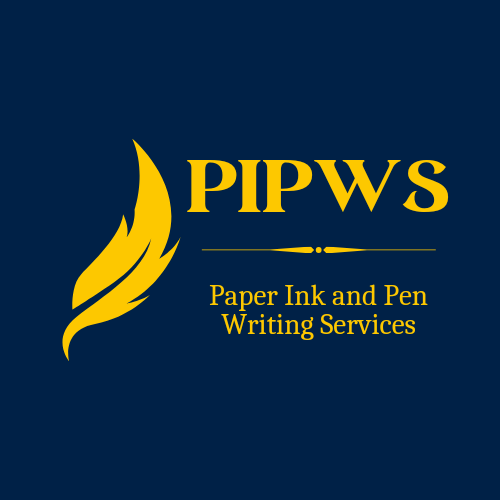Click the icon below to listen to the text.
This discussion is the conclusive installment in our academic writing formats series. We have explored the basics of academic writing based on our Academic Writing Basics course, which has involved introducing referencing styles students tend to use. The guidelines have proven to be summative compilations of considerations from academic writing characteristics and types of academic writing. Each academic writing has included definitive components, which combined these considerations uniquely to generate a distinct formatting for an academic paper.
Having covered the four main academic writing formats learning institutions use, which include APA, MLA, Chicago (Turabian), and Harvard formats, it is worthwhile to mention other lesser-known referencing styles students may use. It is common for students to encounter academic writing tasks that require these other referencing styles because these formats tend to be subject-specific. Let us identify these academic writing formats, their features, and referencing tools that simplify preparing their referencing information.
Table of Contents
Introduction to Other Academic Writing Formats
Many more referencing formats exist apart from the four our courses cover. The four are limited to common referencing styles and systems students are likely to use. However, formats that are specific to a discipline may be necessary. Students may have to apply academic writing formats recommended for academic publication, which scholarly bodies such as journal publishers have developed and enforce. Other such formats include:
| Referencing format | Citation Type | Applicable Discipline |
| Vancouver | Numeric | Medicine |
| OSCOLA | Notes | Law |
| IEEE | Numeric | Computer Science Engineering |
| AMA | Numeric | Medicine |
| ACS | Numeric Author-page number Notes | Chemistry Physics |
| NLM | Numeric | Medicine |
| AAA | Numeric | Anthropology Social studies |
| CSE | Parenthetical Numeric (Citation-sequence and citation-author) | Sciences |
| AIP | Chemistry Physics | |
| ACM | Computer Science Engineering | |
| ASA | Sociology | |
| MHRA | Parenthetical | |
| RSC | Notes | Chemistry |
| APSA | Parenthetical | Political science |
Features
The general rules of academic formats, which we have already discussed, also apply across all other referencing styles or systems. Notable differences would be observable in the reference list entries. The title for the list tends to differ based on the academic format in use. For example, APA refers to the list as the reference page, MLA uses works cited, and Chicago (for History and Humanities) uses a bibliography.
Referencing Tools for Academic Writing Formats
Special attention is required for the order of information for the references and the format to apply in reference preparation. The type of information source you use is the main determinant in this case (website, book, journal article, report, etc.). A citation generator would prove to be useful for helping you create accurate references. Services the software provide may either be free or require a subscription. They may also develop references either for specific formats only or most of the commonly used styles and systems. Such tools include:
- Cite This for Me
- Citation Machine
- Citefast
- MyBib citation generator
- Scribbr citation generator
- QuillBot citation generator
- Bibme
- ZoteroBib
- EasyBib
- Mendley Cite
- EndNote
- KnightCite
- Citation Builder
- Paperpile, and many more
Types of Referencing Tools
Citation generators include citation management software or bibliographic software and citation builders. Citation management software enables their users to:
- Prepare, organize, store, and retrieve details about citations for your sources of information
- Import a record and pdf from a database
- Add various functions such as keywords and abstracts to improve the efficiency of your project
- Use the citation manager with word-processing software to insert appropriate citations into a paper and create a list of references
Users must be careful with them because the software:
- Fail to create accurate reference lists or bibliographies according to the specificities of the academic format in use
- Captures information about references from a database with its omissions and errors
- Cannot differentiate the types of sources of information e.g. telling a book apart from a report.
Citation builders, on the other hand, are free software programmes on online sites, which allow users to create citations and references without storing the information or linking to word-processing software. They work well when users need to prepare referencing information fast and have few sources of information to manage. Bibliographic software, on the other hand, requires time to learn but is better at handling larger volumes of reference sources. They are also compatible with word processing software.
The choice of a bibliographic software can depend on capabilities to accommodate various conditions such as:
- Working with multiple computers
- Working from multiple locations
- Working without an internet connection
- Archiving web pages
- Importing citations from other sites
- A need to share citations with other people
- Working with complex or unusual citation styles
- Working extensively with PDFs
- Software location-web-based or desktop version
- Compatibility with word processor
- Storage capacity
- Attaching associated files
- Searching full text in a PDF
- Automatic citation extraction from PDFs
Information Sources

We have cross-checked our learning material about other academic writing formats against other academic publications to ascertain the quality of our information. Doing so has allowed us to ensure the descriptions and illustrations we provide for concepts the lessons discuss are accurate and up-to-date. Some of the methods we use may be inaccessible in other publicly-available academic literature because they are our inventions. However, any other approach we have not developed is accessible through academic literature available for public use. Academic publications we have used to cross-check the academic writing concepts we have captured include:
- American University. (2021). Citation Style Guide. Retrieved from https://subjectguides.library.american.edu/c.php?g=175008&p=1155406
- Swaen, B. (2022). Citation Styles Guide | Which Citation Style Should You Use? Retrieved from https://www.scribbr.com/citing-sources/citation-styles/
- UC Davis Library. (2022). Citation Styles. Retrieved from https://www.library.ucdavis.edu/guide/citation-styles/
- University of Sussex. (2022). Referencing Styles. Retrieved from https://www.sussex.ac.uk/skillshub/index.php?id=451

